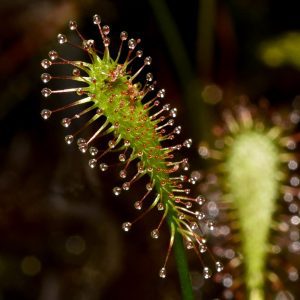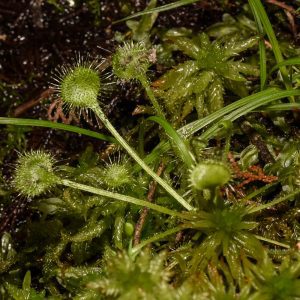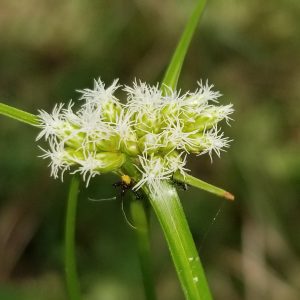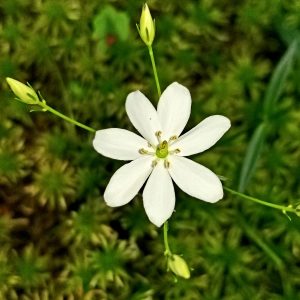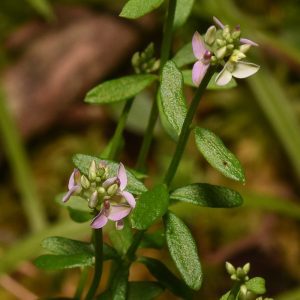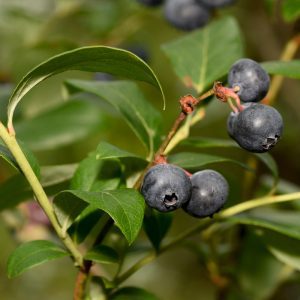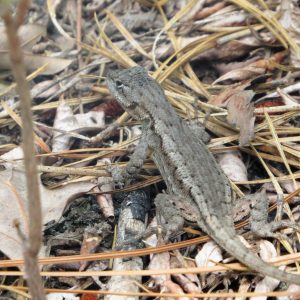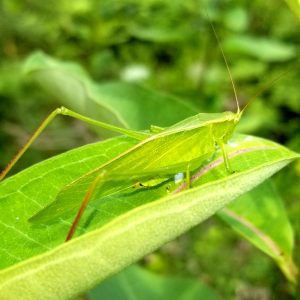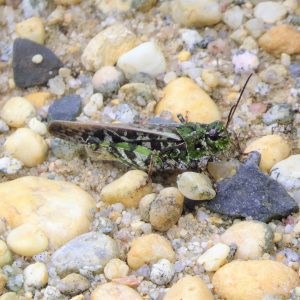By Joe Sebastiani, Director of Adult Engagement
In mid-July, a van full of Delaware Nature Society members spent the day walking and touring the gem of the New Jersey Pine Barrens…Franklin Parker Preserve. This Preserve is owned by the New Jersey Conservation Foundation, whose leadership raised the funds necessary to purchase the property in 2003. This was the largest private conservation transaction in New Jersey history. The preserve is vast, covering 16 square-miles in the heart of the Pinelands and surrounded by an additional 250,000 acres of public conservation lands. With 21 miles of trails on-site, we only scratched the surface of this expansive network.
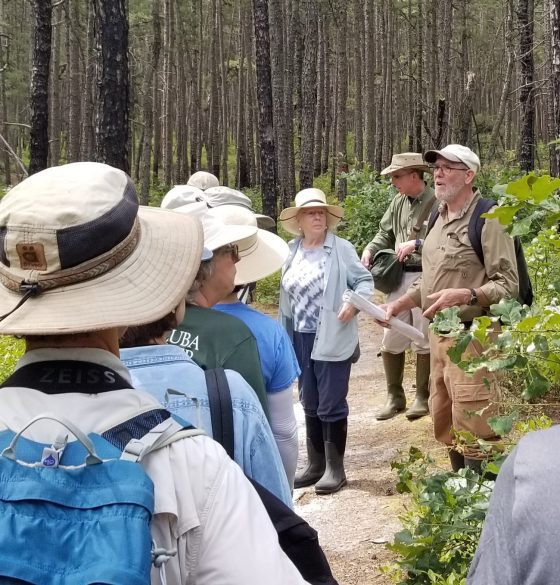
Touring the Preserve
Our tour focused on botany and we started with a walk into an Atlantic white-cedar swamp. Here, the ground was covered in sphagnum moss, and each step was like walking on a wet sponge. Standing still, we could feel the earth vibrating when others around us took a step. It was a bright morning, but the sun was quickly forgotten in the dark, quiet understory of the cedars. Fowler’s Toads and Southern Leopard Frogs hopped through the area, and the small plants of the swamp revealed themselves. Russell explained life histories, Latin name meanings, and ecologies of what we discovered as we slowly explored.
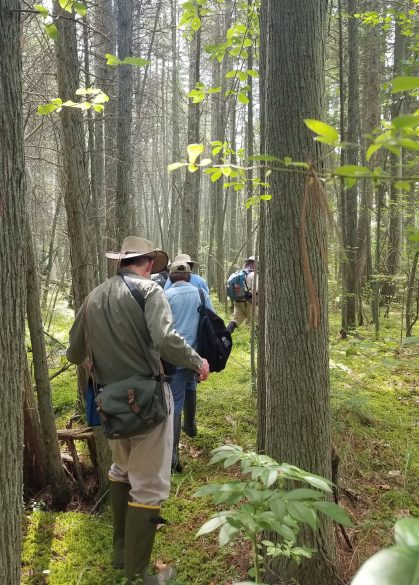
Plants of the cedar swamp include many species that enjoy the wet, acidic soils. Here, we found three insectivorous plant species: round-leaved and spoonleaf sundew, as well as the purple pitcher plant. Other wildflower species included lanceleaf rose-gentian, tawny cotton-grass (actually a sedge), and littleleaf milkwort.
One thing the cotton-grass, rose-gentian, and milkwort have in common is that they are all rare in Delaware. In the Franklin Parker Preserve, they seemed relatively common in the cedar swamp. Our group of naturalists were thrilled to see plants they’ve never or rarely encountered. Discovering organisms for the first time is a fundamental component of enjoying nature. It’s like you’re a kid again who caught their first frog.
Our walk through the drier pine-oak forest was much different. The heat of the sun, the dry sandy ground, and the plants provided a contrast to the cedar swamp. Russell explained the role of fire in the pine barrens landscape. Pitch pine, which dominated the forest, does well with regular fires. Post, blackjack, and bear oak look like shrubs because of the prescribed fires used as a land management tool.
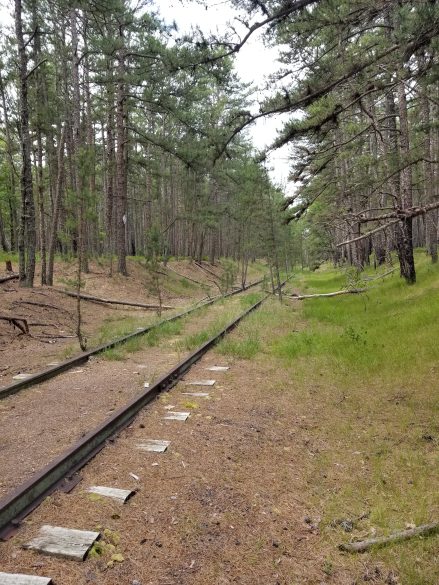
Discovering Creatures
As we walked through the pine-oak forest, we noticed many small creatures. Katydids, grasshoppers, a Fence Lizard, and lots of insects darted away as we moved along the trail. We taste-tested many-a-blueberry and huckleberry, noticing the difference in flavor and texture. We also found more wildflowers in bloom along an old airstrip in the Preserve.
Exploring the Cranberry Farm
The most amazing part of the Franklin Parker Preserve is the former cranberry farm. These cranberry pools, once used for cultivation, have all been returned to nature. The Conservation Foundation has restored a more natural water flow through the pools, changed their topography to create deep areas and muddy high ground, and let nature return. Native wetland plants recolonized these habitats, and it is a stunning sight to see. Birds have responded as well. Ducks, shorebirds, eagles, and oddly…Gull-billed Terns were spotted by our group. Gull-billed Terns are typically coastal, but this preserve is located about 20 miles inland so they were a real surprise.
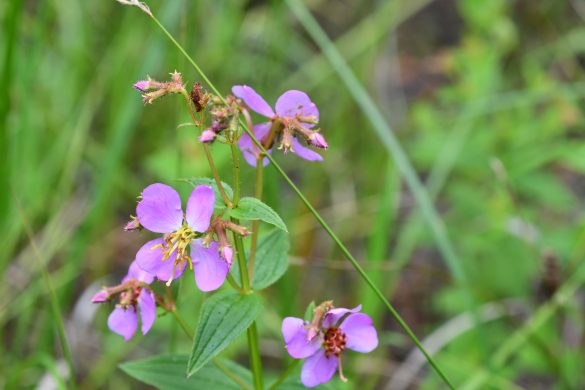
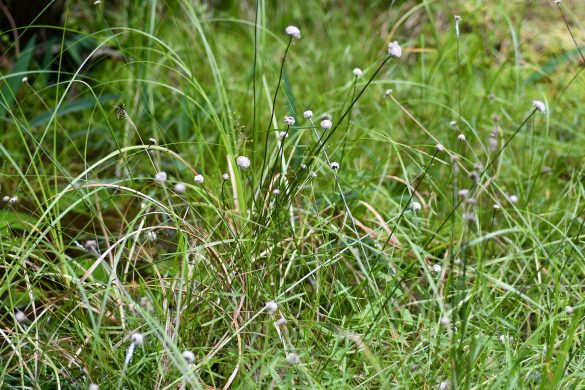
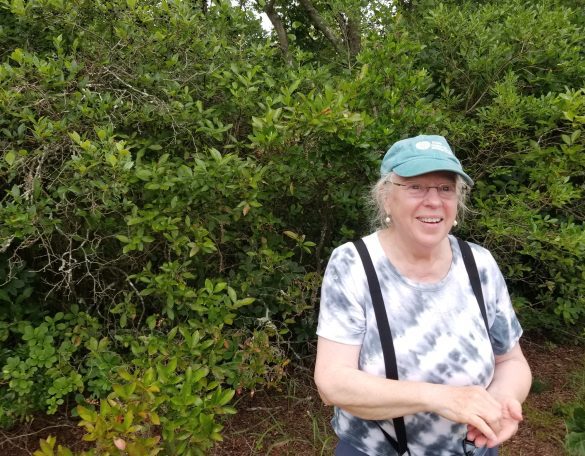
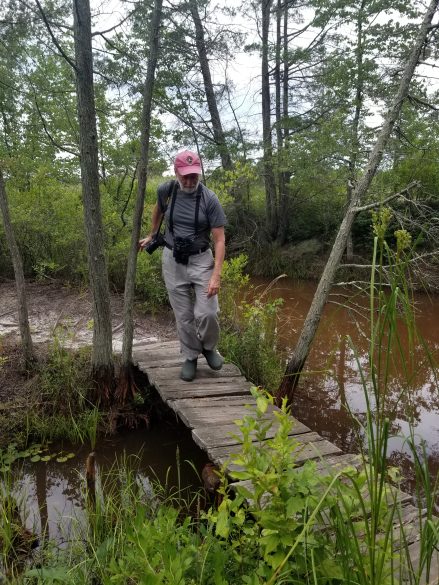
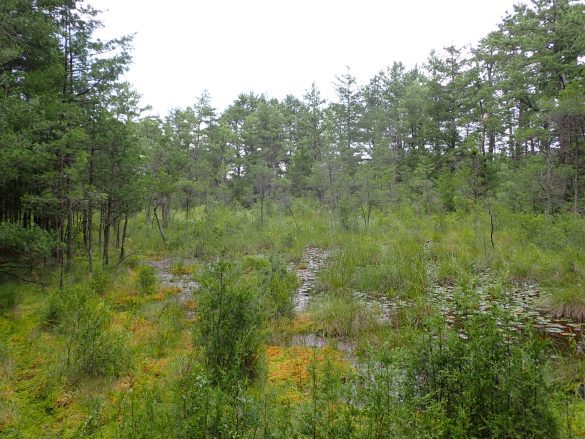
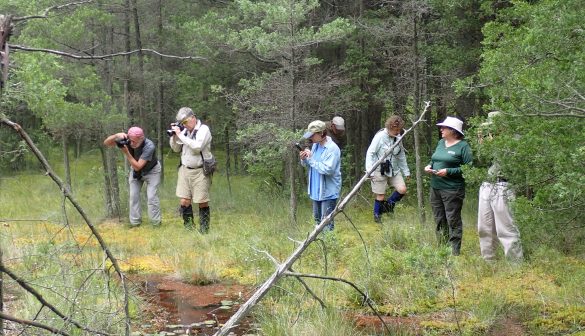
It was a treat to experience Franklin Parker Preserve with our guide Russell Juelg. He had a wealth of information, botany experience, and without him, we would most certainly have been lost within the maze of trails in the former cranberry farm. Take a trip there if you want to experience a wonderful part of the New Jersey Pine Barrens, and some special wetland habitats.
